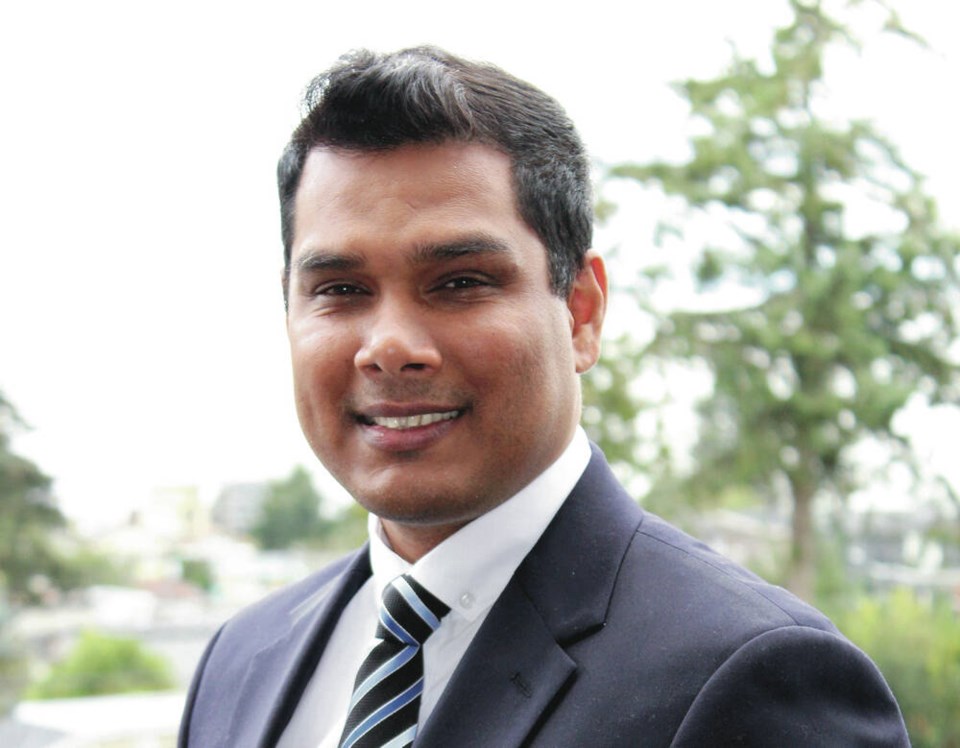A Royal Roads University professor is using advanced artificial intelligence models to sift through vast amounts of data to help organizations identify possible instances of financial fraud.
Mark Lokanan is a data scientist and machine learning expert specializing in AI-driven financial crime investigations.
His research team at the university is using AI to recognize patterns in data to identify abnormal transactions that forensic investigators with banks and other institutions can investigate further.
AI is already widely used commercially to detect financial fraud. Lokanan and his team are developing their own models using advanced types of AI for specific types of fraud, aiming for high accuracy ratings to spot anomalies within vast amounts of data.
Artificial intelligence allows technology to mimic human intelligence by carrying out complex work, such as writing, reasoning, decision-making and problem-solving.
When hunting for fraud, Lokanan’s models or codes are looking for patterns of deception or misuse.
A typical financial statement can be expected to flow a certain way. His new models have been designed to find anomalies within a financial statement, for example.
Models are trained to learn specific patterns. For example, they can look at a company and find an unusual spike in spending or they can discover possible manipulation of data.
When the models, designed to work in real time, find a deviation from normal patterns, they will send a notification on a computer screen so the user is alerted.
At that point, a company can use trained in-house staff to investigate the spike to find out if it points to fraud.
Lokanan’s team uses machine learning and deep learning, types of advanced AI, to recognize patterns within data. The techniques rely on algorithms developed through extensive testing, he said.
“There is a lot of math behind this. Equations are very complex,” Lokanan said.
Models are built to help algorithms detect specific anomalies pointing to particular types of fraud, based on how they believe fraud should be analyzed.
“The actual algorithms are not new. … But our models are new,” Lokanan said.
So far, his AI models have been tested on two large data sets, one looking into financial-statement fraud and the other at supply-chain fraud.
For the financial fraud work, Lokanan purchased data collected by the University of Southern California covering about 1,000 companies investigated by U.S. officials.
Supply-chain data was available publicly and did not have a cost.
Models created for financial fraud were specific to credit-card fraud and mortgage fraud, where people give false information to obtain property.
For supply-chain fraud, the team examined how individuals manipulate the ordering process for their own benefit, he said.
For example, someone might order a product online and then say it never arrived. Others might order a product and, once it’s in transit, cancel that order.
AI models are designed to red-flag instances where deliveries are late or shipping is cancelled, so companies can investigate.
Models can generate regular reports, such as weekly updates, depending on what a company wants, he said.
It’s too soon to take the models to market because research is continuing into how robust — or accurate — they are, he said.
Lokanan said he is pleased so far with the accuracy of the models in pinpointing red flags in the financial-data and supply-chain fraud work. They are peer-reviewed by other professors, a process that can take two years, and published in journals.
Results from the supply-chain data set came up with accuracy scores in the mid-90s out of 100. Financial data models generated accuracy rates in the mid-80s, he said.
For the financial fraud, Lokanan is hearing from professors around to world who want to collaborate with him.
The Canadian Anti-Fraud Centre said in its 2022 annual report that fraud is leading to larger losses — rising to $530.4 million in victim losses in 2022 from $383 million reported in 2021.
Lokanan is moving his research beyond crime, saying similar processes used to track down fraud can be used in different fields.
“What we have realized is the same model can be used across different data sets in various domains, and now we are expanding them across various domains.”
For example, he’s working toward models to predict which employees will stay and which will leave a workplace, which is useful because it’s expensive for employers to replace an employee.
A high turnover rate can hurt morale and reflect an issue with company culture that needs to be addressed.
Some employers spend tens of thousands of dollars to replace a trained employee.
Temporary worker fraud — a major issue in Canada — is another area of interest.
Lokanan is keen to examine data from Statistics Canada relating to companies not complying with government requirements, which could include not reporting wages and not correctly classifying workers.
He wants to compare fines handed out to these firms by various government regulatory bodies to see if penalties are proportionate to offences.
>>> To comment on this article, write a letter to the editor: [email protected]



